
On the sidewalk by my feet was a bat-signal. It was red, measuring about three or four inches wide. I could easily have missed it, except that I was looking down. I thought it was a one-off urban oddity until I noticed more bats in red and in black strewn about. What did they mean, these bat-signals for the downcast?
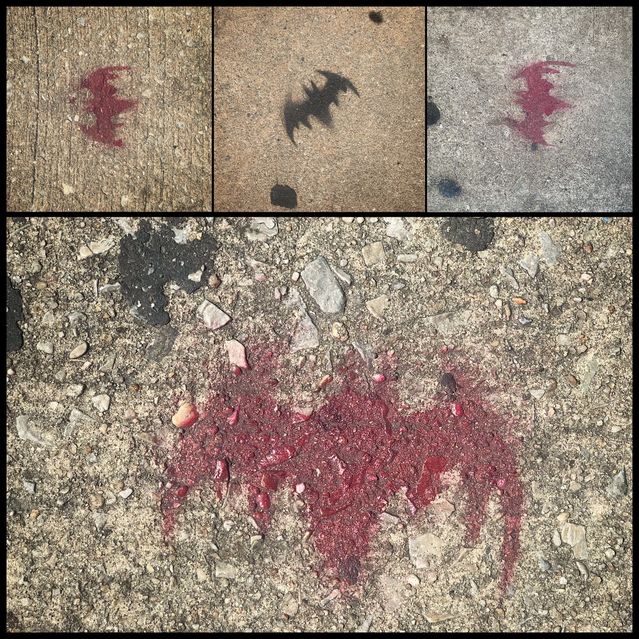
Like many now sheltering in place, I venture out mostly to shop, occasionally to work (having been deemed essential), and daily to walk. Walks under quarantine take on a special quality. Walkers know the meditative calm and joy of an aimless meander. Of slowing down. Of noticing. When we are driving or biking or running, small details escape our attention because we are more interested in where we are going than where we are. For those of us lucky enough to not be sick or overwhelmed or desperate, quarantine walks are an apt analogy for these unprecedented times. A time to slow down, to notice what we value, to appreciate where we are even as we don’t know where we are going.
To me, the bat-signals invite the question: What is art good for? A question for anyone who cares about art. Philadelphia boasts world-renowned art at its Museum of Art, the Barnes Foundation, and the Pennsylvania Academy of Fine Arts, among other museums and galleries. While I cherish these places, I do not find them best-suited to provide succor in sequestration.
My city and neighborhood also teem with local street art. Philadelphia has one of the most active mural arts programs in the world. Four thousand murals adorn walls in almost every neighborhood, a cultural showcase made in collaboration with local residents. Besides formally commissioned display, local and often anonymous artists’ sheer creativity of expression overflow into the streets. To give you a sense of the richness of Philly street art, here are fragments of my meandering as I pondered the bat-signal.
An immigrant girl pops out vibrantly against the city backdrop. The title—Aqui y Alla (Here and There)—reminds us she belongs here even as she came from there.

A few blocks away colors and shapes violate boundaries of wall, door, curb. An empty street with the intrigue and ambiguity of an archeological find.
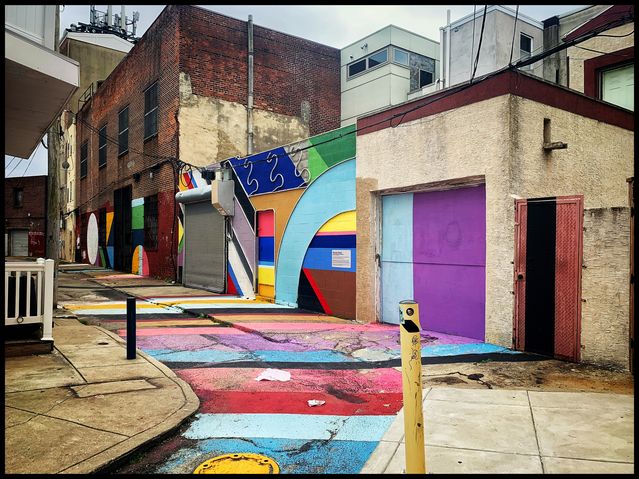
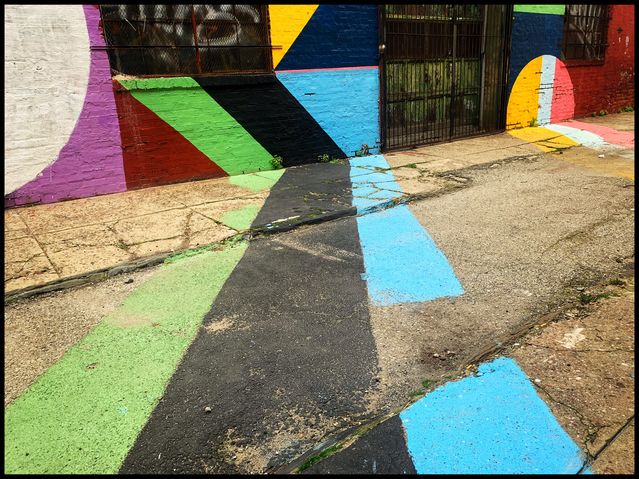
Tucked beyond the bend in the street, the image heading this blog—a horse or a stag attacked by wolves. A recognizable motif in European fine art, and oddly fitting on this decidedly not fine boarded garage entrance.
On the side of a nearby window, a political outburst among scribbles. Anger at leadership, resonant even if lacking subtlety.

Around a corner, an index card with a pithy poem lamenting intrusions into the safety of our dreams.

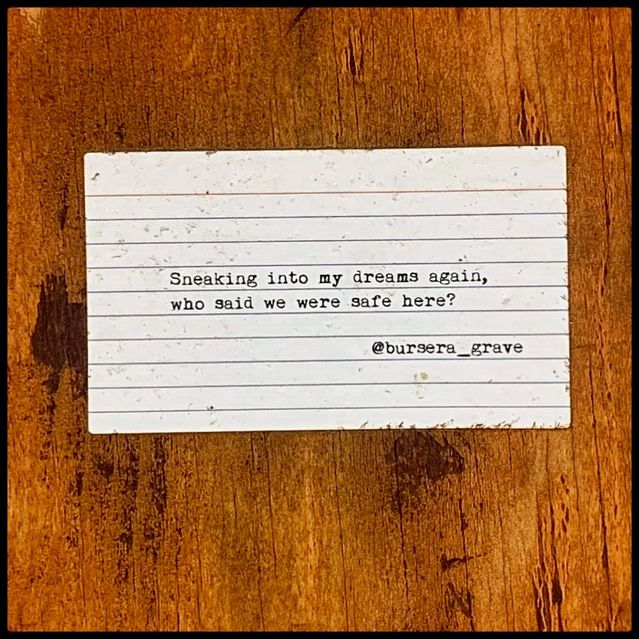
A sticker with morbid undertones taking on new force as the daily death toll rises with each blink of our collective eyes.
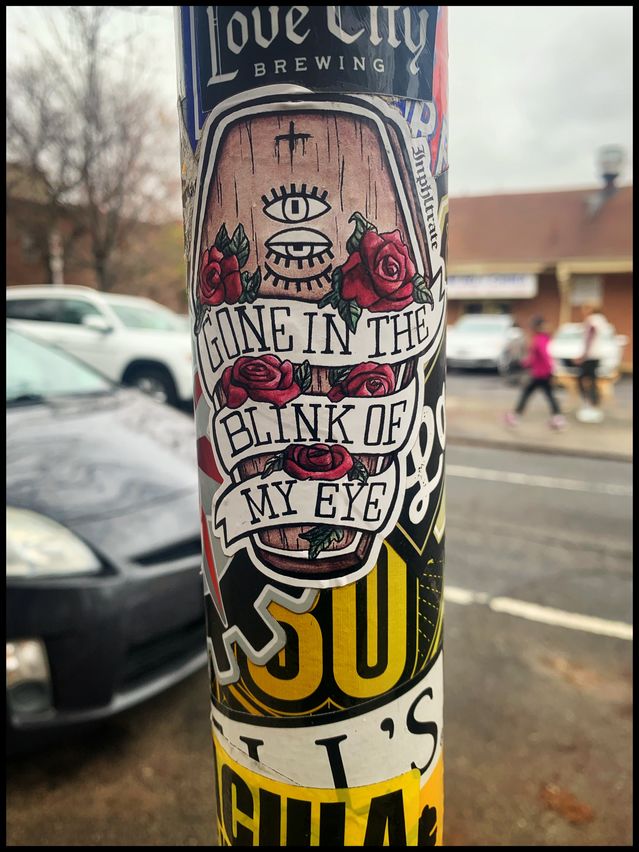
Butterflies on a telephone post. An inviting entrance to a tucked-away street, optimistic when optimism seems in retreat.
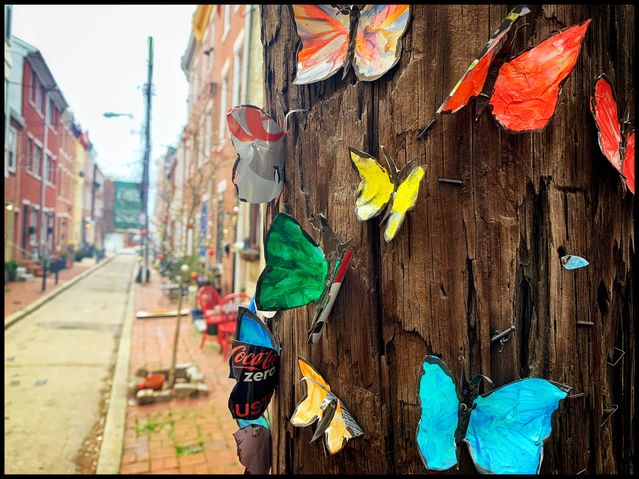
Another sidewalk message. A poignant plea to our humanity at foot even as we avoid others’ bodies and, too often, others’ eyes.

Pieces of a city-wide celebration of remarkable women typically ignored by history. Lucretia Mott and Mae Reeves (whom I had never heard of) honored minutes from my house.

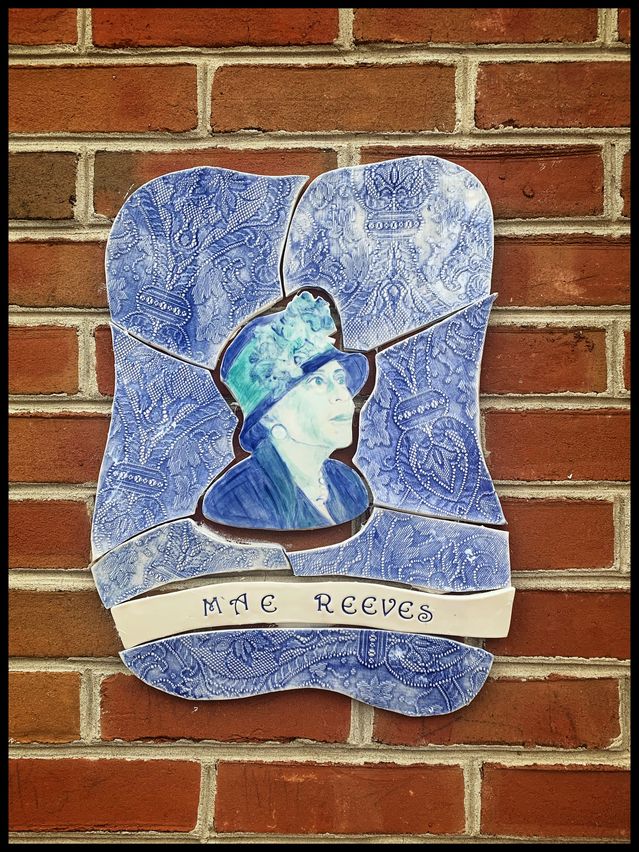
A striking pair of doorways offering choice. Bars on one side and a teeth-baring guard to the other? Both scary to my eye.
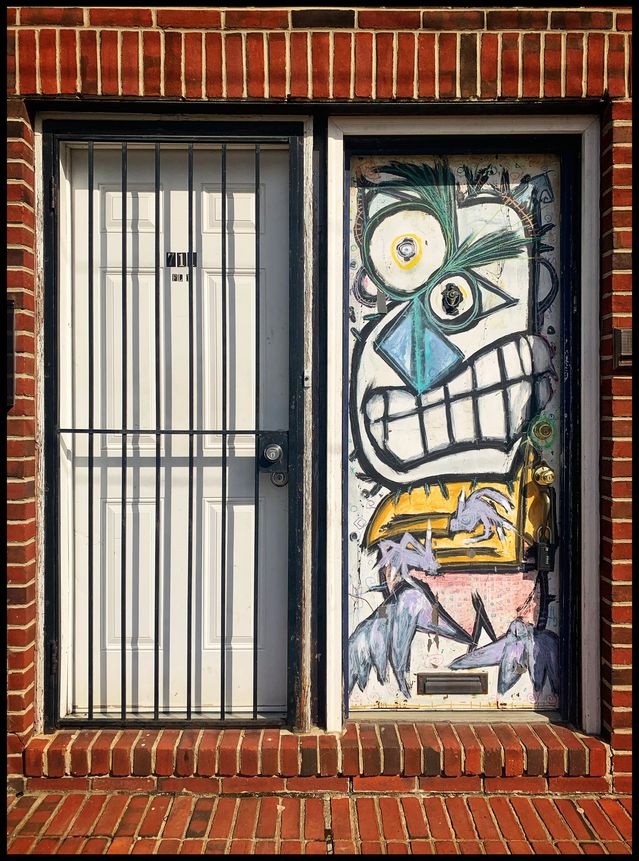
A post on a board covering an ATM machine. A symbol, perhaps, of the blocked economy, reflecting stranger things in our upside-down world.

A vibrant, back alley gallery, only visible if you wander off the (typically) bustling street a block away. In normal times, why would you?

Graffiti, wheat pastes, stickers, boards, paintings, on walls, down alleyways, on sidewalks, along fences, on posts, around corners, in nooks, waiting to be discovered, hoping to reach us.
What is art good for? Big thinkers with big ideas think that art can elevate, transform, and enhance understanding. When I meander, my experience of hyper-local art is more intimate, more personal. The art makes me smile, makes me wonder, makes me reflect, makes me curious, makes me connect to my community.
Art on a meander is good for slow living. It offers moments to pause, to feel, and to value. It is a salve for wounded times. Maybe art is always these things. If we take the time to notice, to be still, to be present.


